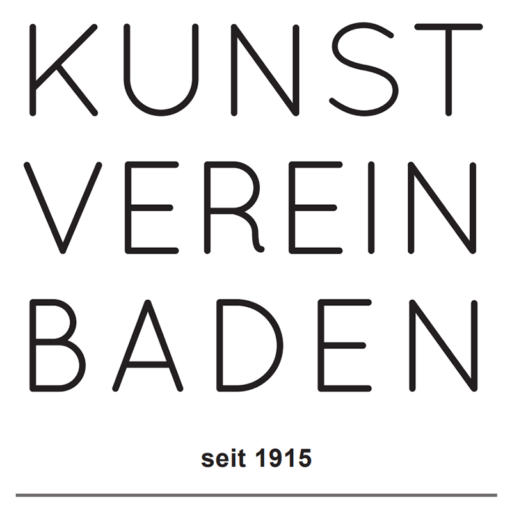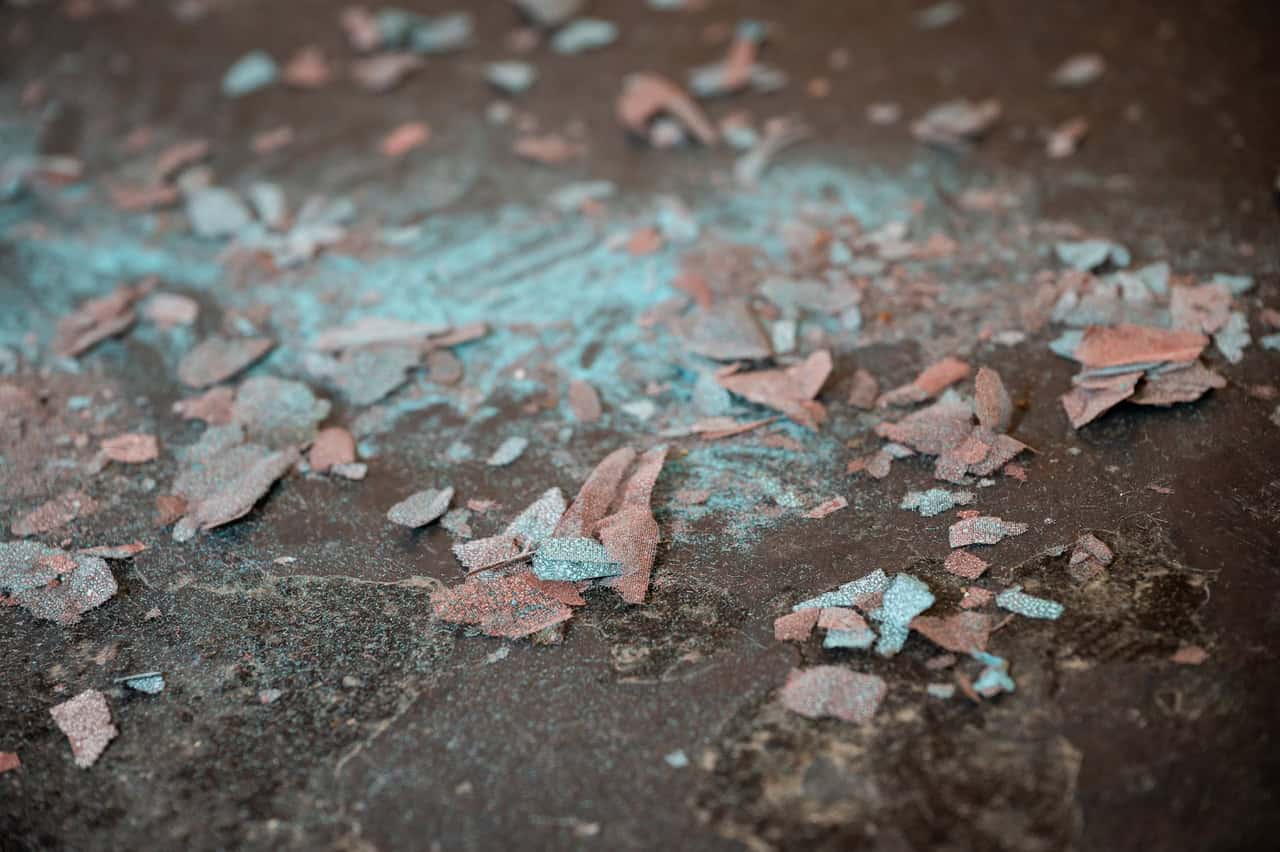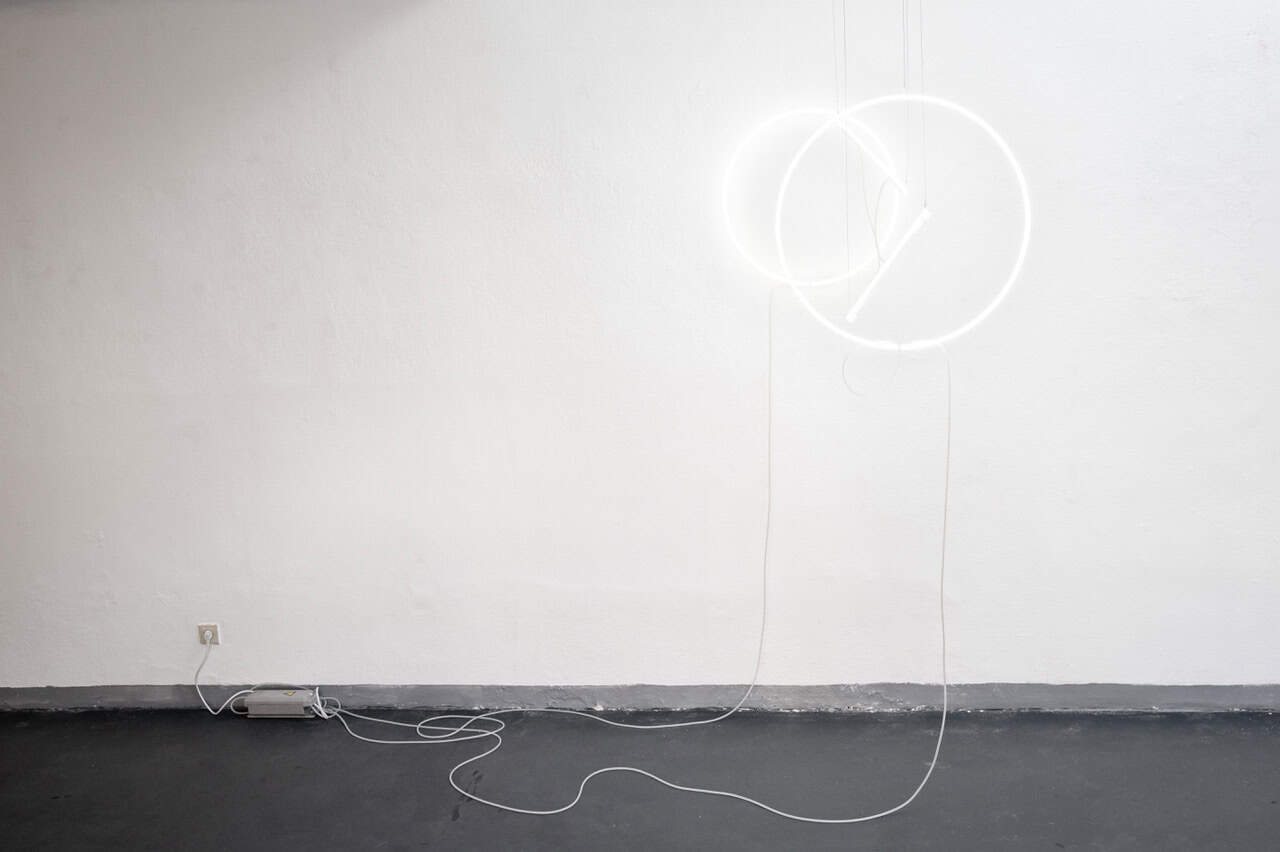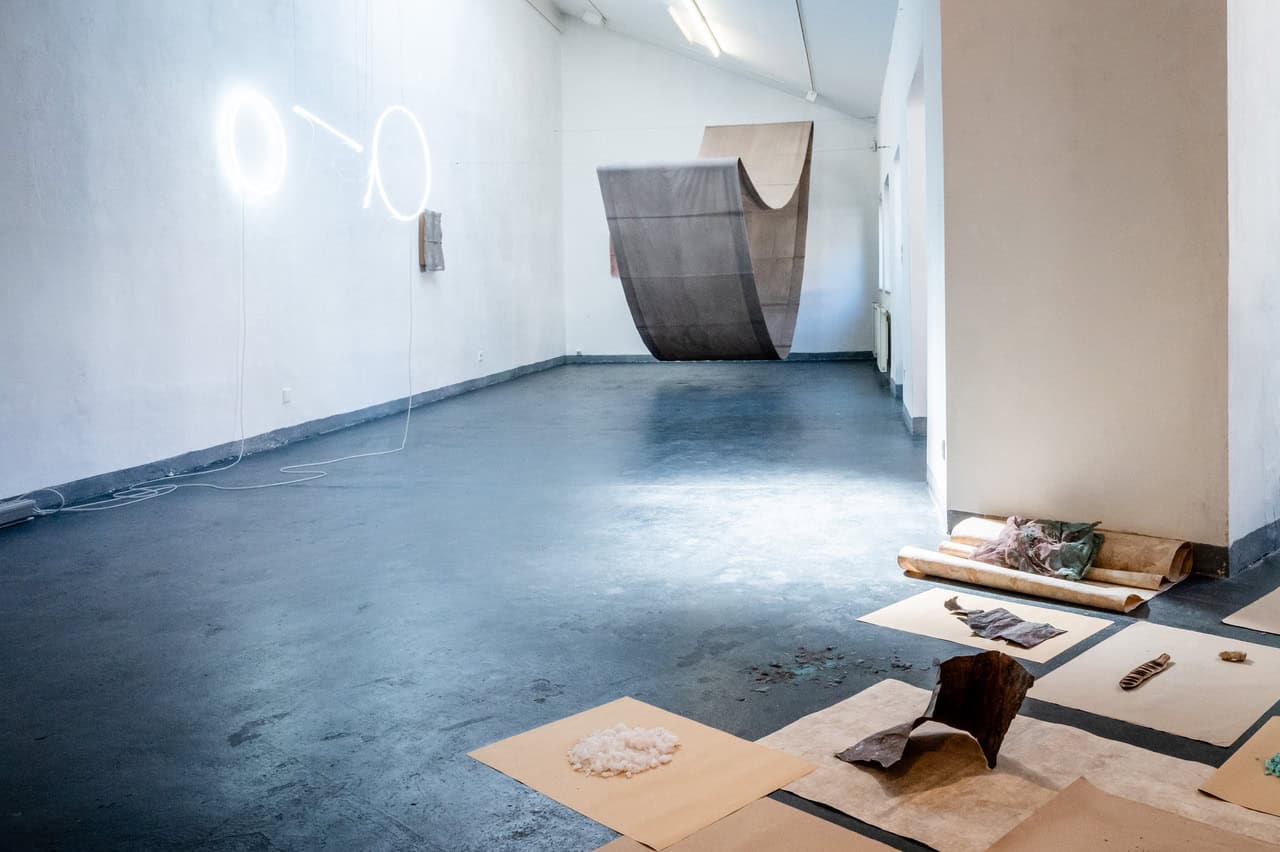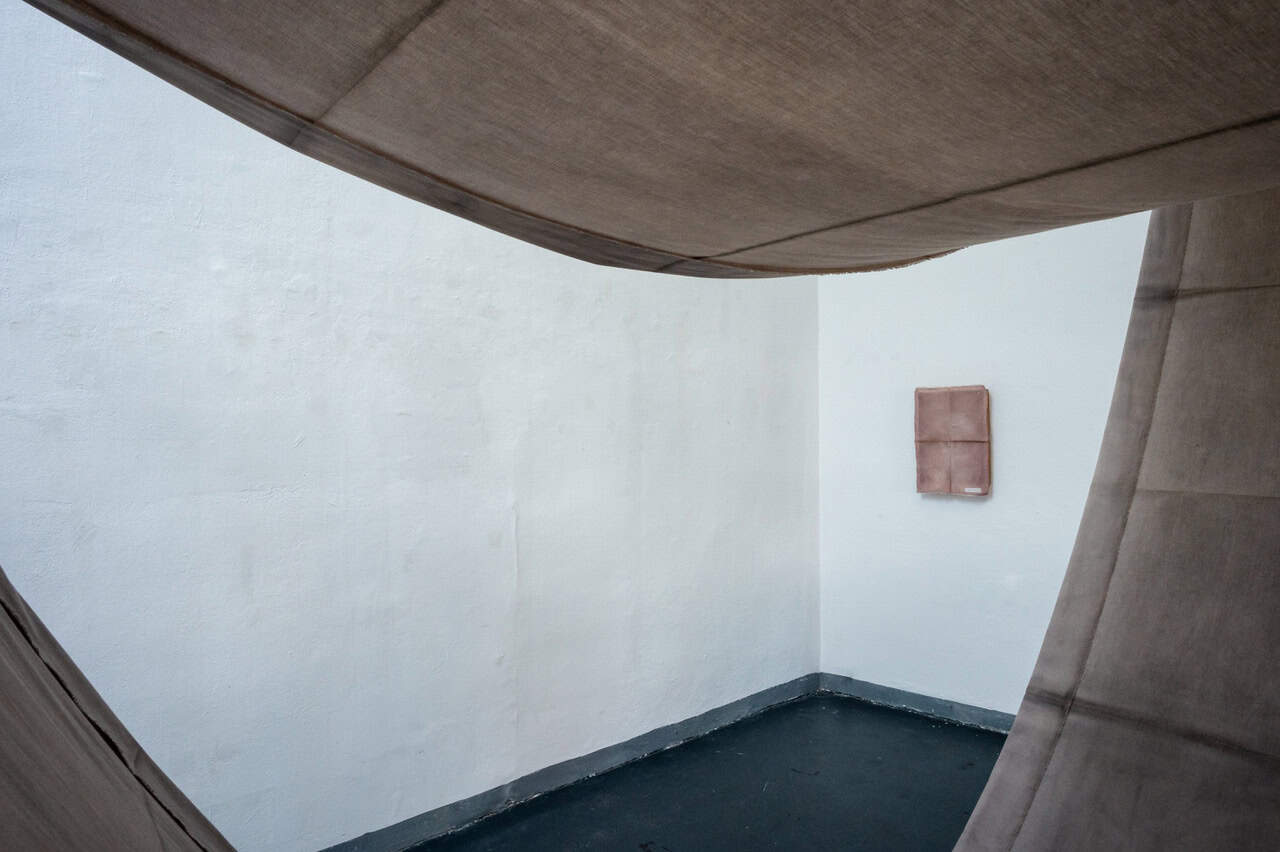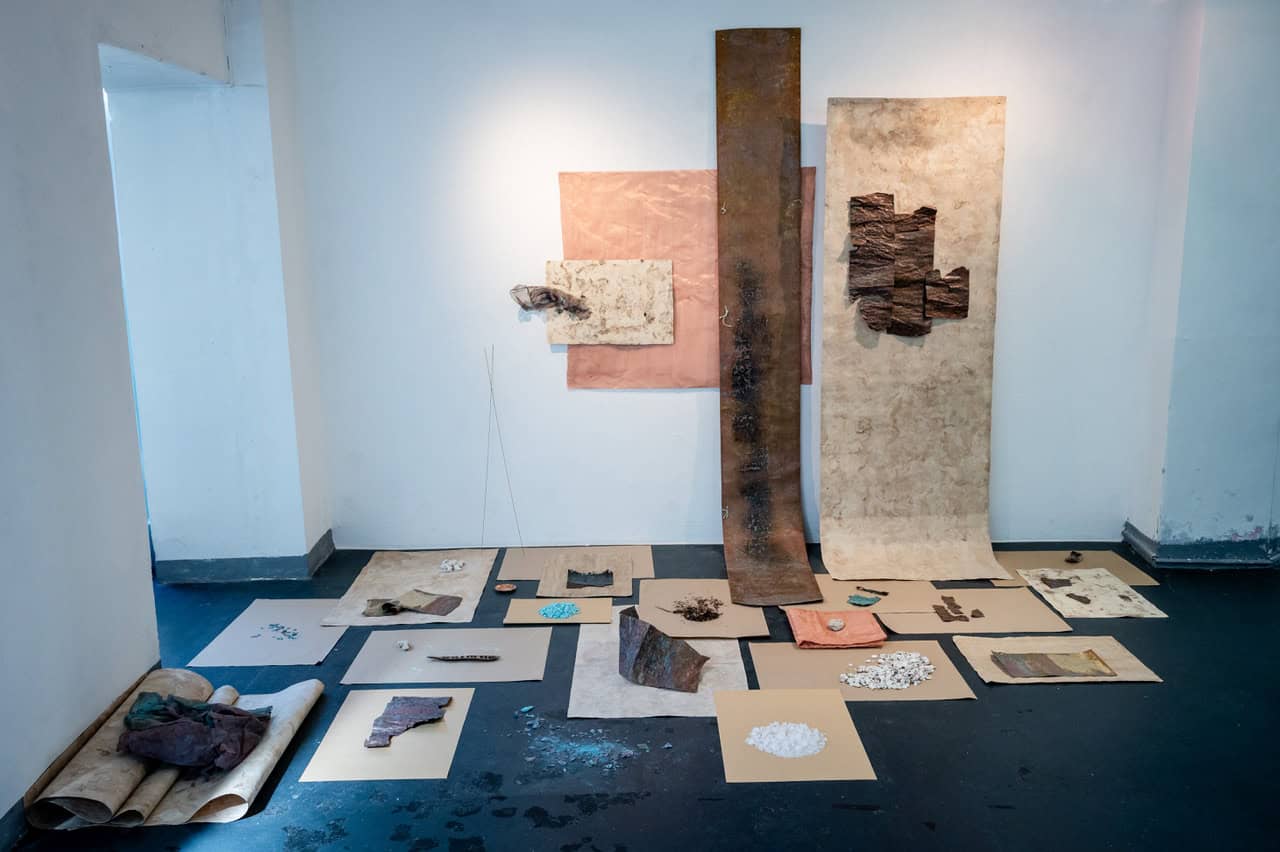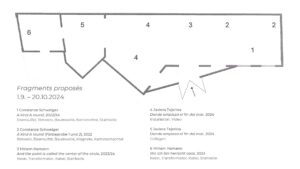Fragments proposés
Curated by Katja Stecher
Art can be a game of chance, and chance is what epitomizes the tenets of the Cadavre Exquis. As developed by André Breton and the Surrealists, the collaborative drawing game gives space to unpremeditated creations of text and images. There is no plan, and only action leads to an outcome. This linchpin to the idea of process is manifested within the group exhibition Fragments proposés at Kunstverein Baden. Uniting the artists Miriam Hamann, Constanze Schweiger and Javiera Tejerina-Risso, the works in this exhibition approach this principle through the use and reinterpretation of fragments from their previous iterations. One work might reappear, and be continued in another. A piece of cotton fabric––its material, folded and naturally dyed, dried and subsequently installed on a building facade––may, for example, be reused for a future body of work.
Each artist conspires with or might find common cause with aspects from where its surrounding left off. At the core is a relation to time and process; the fragments of Hamann, Schweiger, and Tejerina become whole through singular investigations of abstract concepts. The results of these self-referential processes, attuned to the principles of nature and science, are works that are quiet, contemplative, and yet transformative.
(Excerpt form the text by Cara Lerchl)
Oscillating between sculptural works and installations, Miriam Hamann investigates the question of how our reality is structured. What shapes our reality and our environment? Which systems of units have we imposed on ourselves and which scientific findings bring us closer to an understanding of the world? Based on these questions, the artist’s work often relates to scientific, physical and technological observations and phenomena. Central topics are mathematical and physical basics, the standardized units such as the second or the meter, geodesy or astronomy.
works in the fields of fine art, literature, graphic design and publishing, allowing the results of her production to enter into a dialog in terms of material, content, form, concept and economy. She uses textiles and textile processes to produce sculptures that address the relationship between time and composition as well as time and individual perspective. Literature, also reflected in her own writing, serves as an essential starting point for her.
Drawing equally on scientific methods and symbolism, her works explore the notion of movement: fluid mechanics and the mythologies of isolation are evoked to confront us with the effects of nature. The laboratory and gallery are both places of observation where she conducts poetic experiments with the elements, abstracting them to such an extent that they become dimensionless quantities.
